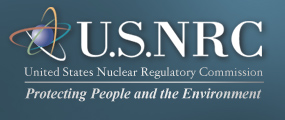Resolution of Generic Safety Issues: Item A-3: Westinghouse Steam Generator Tube Integrity (Rev. 2) ( NUREG-0933, Main Report with Supplements 1–35 )
DESCRIPTION
Prior to 1978, operating experience with PWR steam generators was characterized by extensive corrosion and mechanically-induced degradation of the steam generator tubes, frequent plant shutdowns to repair primary-to-secondary leaks, and two SGTR events (Point Beach 1 in 1975 and Surry 2 in 1976). In 1978, Task Action Plans for Items A-3, A-4, and A-5 were established in NUREG-03712 to evaluate the safety significance of degradation in W, CE, and B&W steam generators, respectively. These items were later declared USIs in NUREG-0510186 and were combined into one effort because many problems with PWR steam generators supplied by the three vendors were similar. Thus, an integrated program was developed for the resolution of USIs A-3, A-4, and A-5.
After SGTR events at Prairie Island 1 in 1979 and at Ginna in 1982, the staff initiated an integrated program to evaluate a number of recommendations stemming from the early USI effort and from lessons learned as a result of the SGTR events. The objective of the integrated program was to complete resolution of USIs A-3, A-4, and A-5, including identification of new requirements that could be imposed on OL applicants and licensees and identification of further efforts that should be undertaken by NRC. The results of this program were documented in NUREG-0844.186
The staff's risk analysis, as described in Section 3 of NUREG-0844,681 indicated that SGTR events beyond the design basis did not constitute a significant fraction of the early and latent cancer fatality risks associated with reactor events at a given site. Furthermore, the risk assessment indicated that the increment in risk associated with SGTR events was a small fraction of the accidental and latent cancer fatality risks to which the general public is routinely exposed. These findings reflected not just the effectiveness of NRC regulatory guidance and TS requirements, but very importantly also reflected industry efforts to improve steam generator reliability which was of significant economic importance to the industry, in addition to providing added assurance of public health and safety.
The risk estimates documented in NUREG-0844681 were based on consequence calculations that employed population distributions, protective actions, and meteorological assumptions equivalent to those presented in the Byron final environmental statement (NUREG-0848).1135 The staff completed a comparative analysis which confirmed that the risk from SGTR-related causes did not exceed the Commission's safety goals on early or latent fatalities. Early fatality risks were estimated to be less than 10% of the safety goal, and the latent fatality risks were found to be a very small fraction of the safety goal.
In view of the relatively low risk estimates associated with SGTR events, the staff concluded that new generic requirements that had initially been proposed as part of the USI program were not warranted. However, the staff found in its value-impact analysis that a number of these proposals, as a group, were effective measures for significantly reducing the incidence of tube degradation, the frequency of SGTRs and the corresponding potential for significant non-core-melt release, and occupational exposures, and were consistent with good operating and engineering practice. As a group, these actions were considered to be effective measures for mitigating the consequences of SGTRs. Adoption of these actions by licensees would further reduce public risk (by as much as 70%) and provide added assurance that risk would continue to be small. These actions were designated as staff-recommended actions.
CONCLUSION
As part of the steam generator USI program, the staff issued Generic Letter 85-021136 to all PWR licensees and applicants to inform them of the staff-recommended actions and to request a description of their overall programs for ensuring steam generator tube integrity and SGTR mitigation. The staff's assessment of the licensee and applicant responses to Generic Letter 85-021136 was provided to the Commission in SECY-86-971137 in March 1986. The staff concluded on the basis of this assessment that the large majority of the licensees and applicants were following programs, practices, and/or procedures that were partially to fully consistent with, or equivalent to, the staff-recommended actions.
Following the North Anna 1 SGTR event on July 15, 1987, NRC Bulletin No. 88-021138 was issued requesting that licensees and OL applicants perform specified inspections and analyses to determine whether their plants were susceptible to the failure mechanism that led to the North Anna event, and that they implement corrective actions, if necessary.
The Commission's current regulations (10 CFR Part 50, Appendices A and B; 10 CFR 50.55a; 10 CFR 50.109; and 10 CFR Part 100) provide the staff with sufficient authority to ensure that licensees implement programs relating to steam generator tube integrity that provide adequate protection to public health and safety. The staff will continue to monitor steam generator experience as an indicator of the effectiveness of licensee programs for ensuring steam generator tube integrity. As exemplified by Bulletin 88-02,1138 the staff may impose additional requirements (pursuant to applicable regulations) to continue to ensure that licensees adequately implement effective programs where such action is determined to be necessary on the basis of operating experience, or as a result of ongoing staff studies. Thus, as stated in SECY-88-272,1139 USIs A-3, A-4, and A-5 were RESOLVED and requirements were established.
REFERENCES
|


